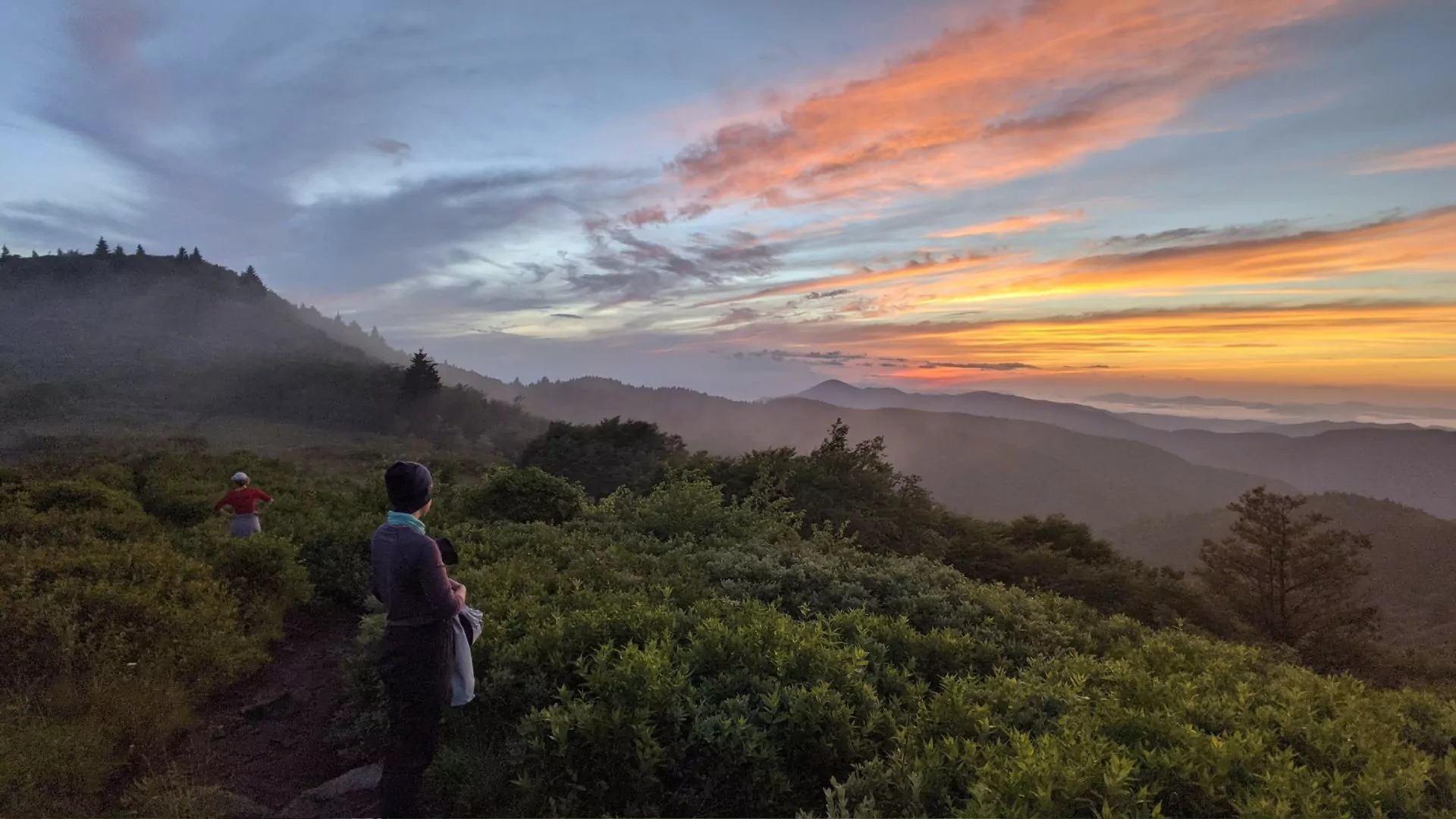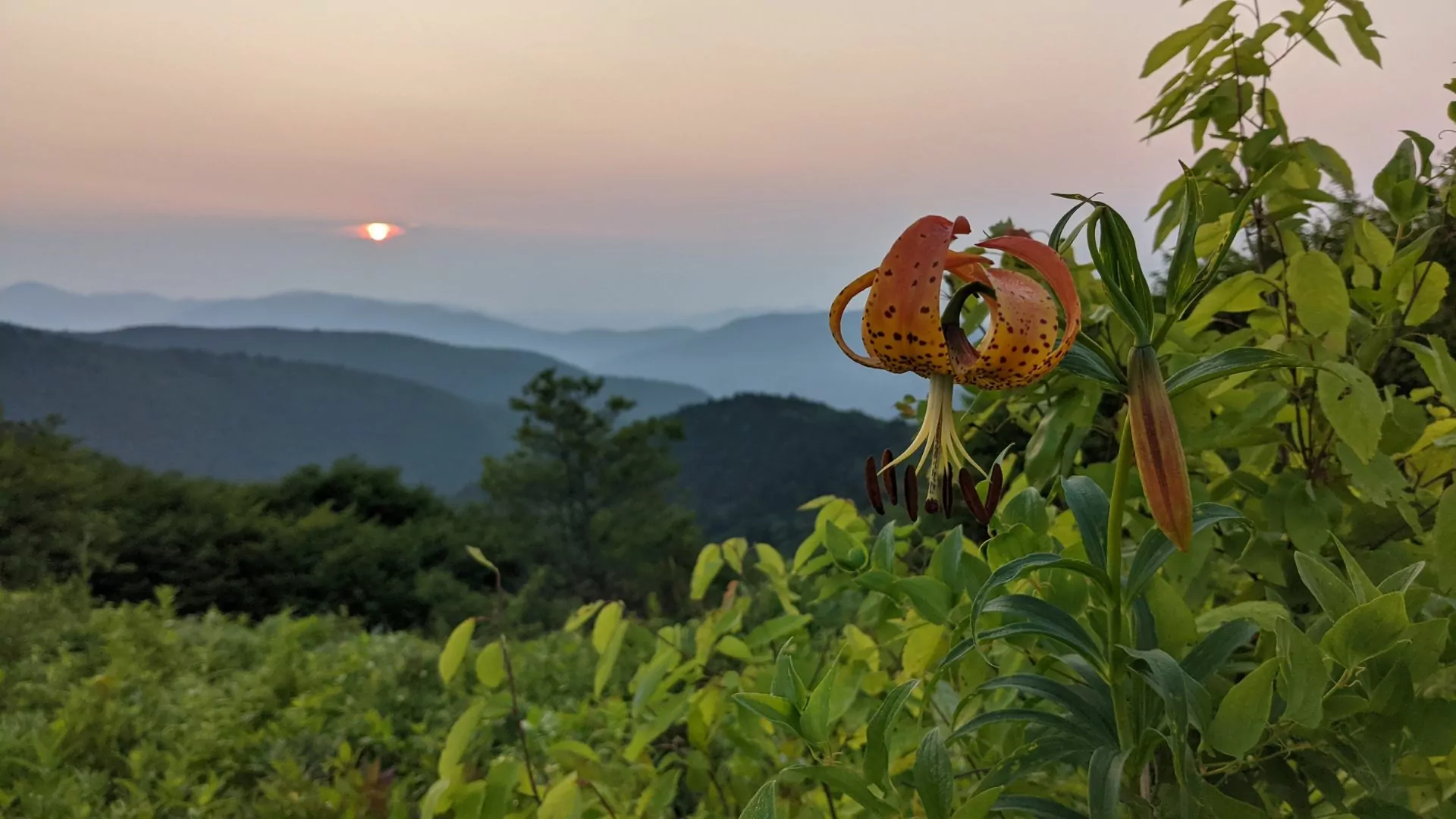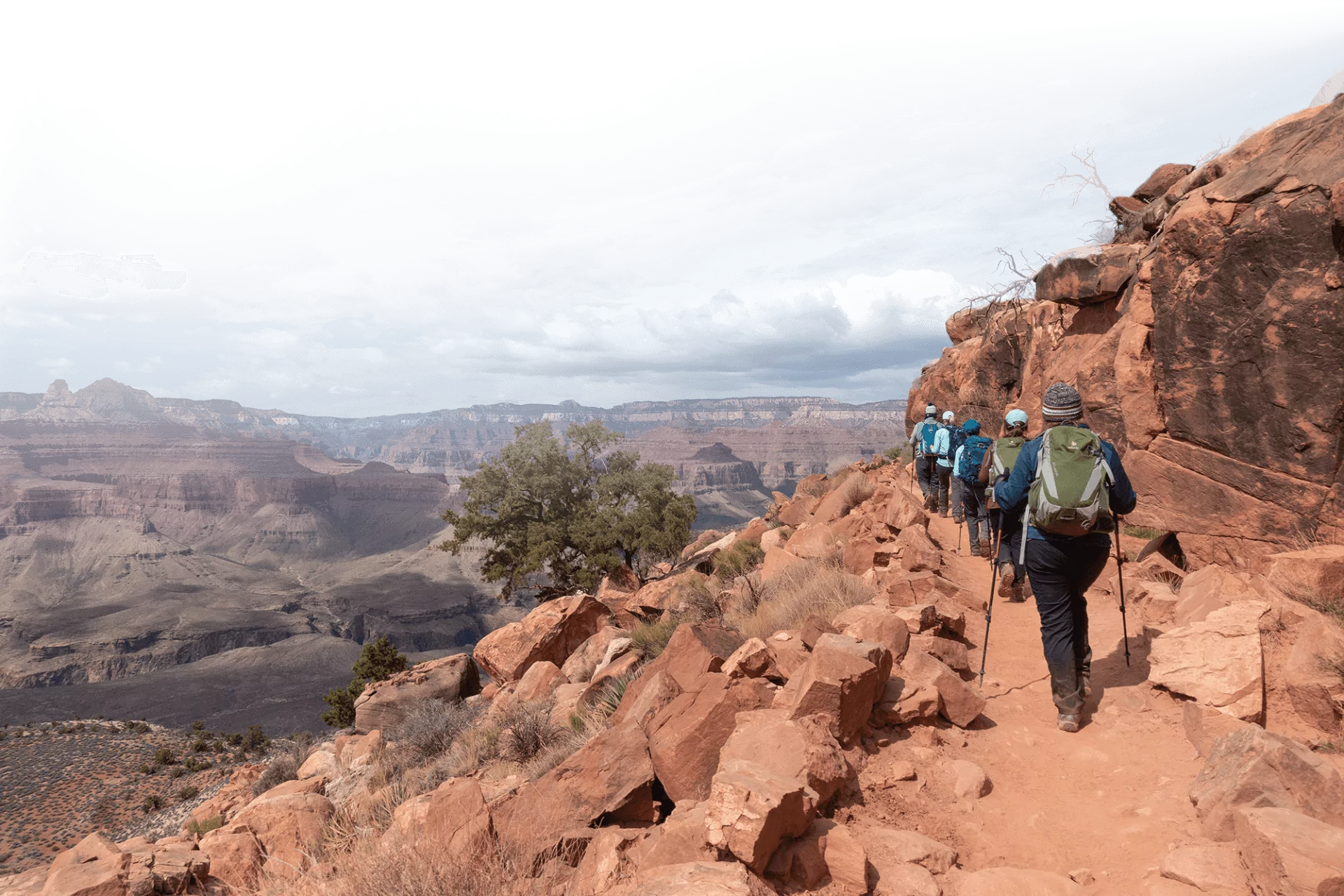Exploring the Shining Rock Wilderness
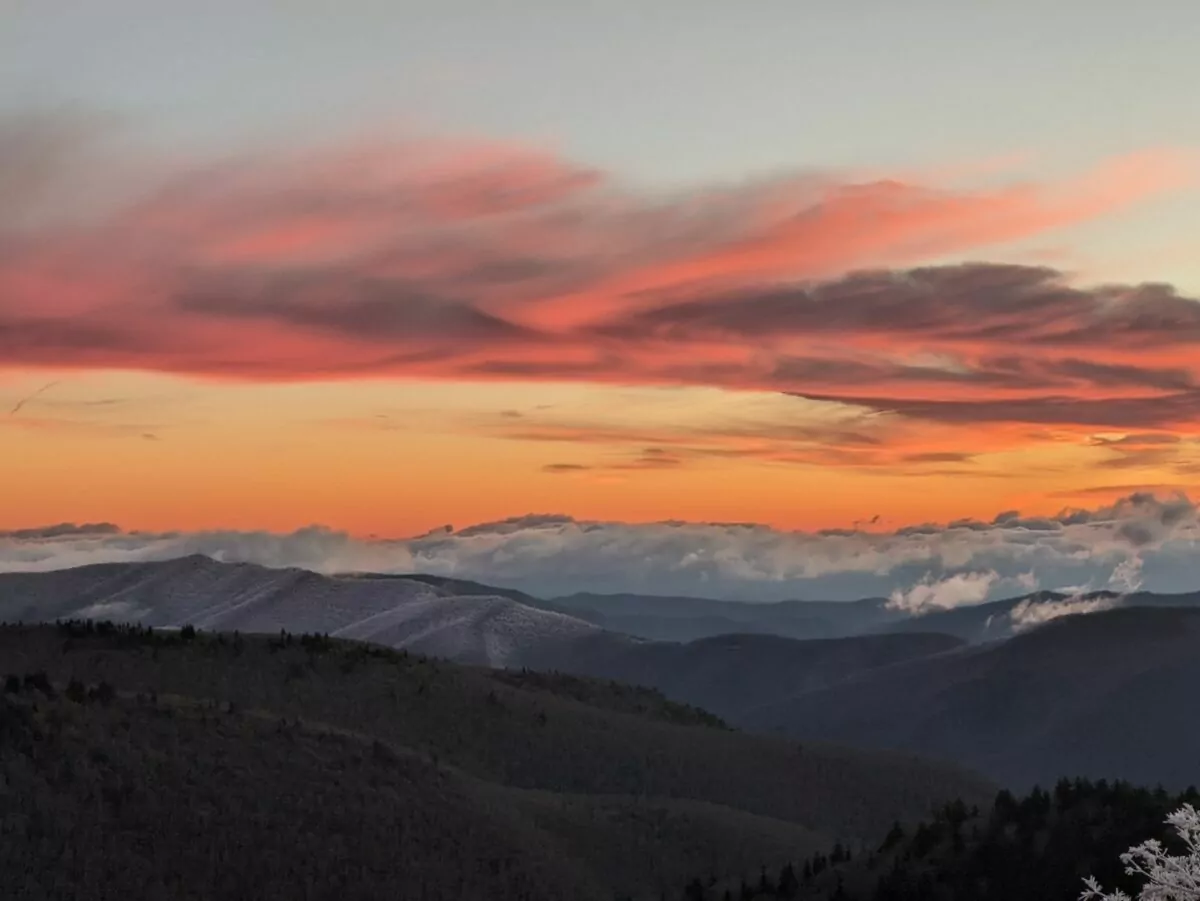
On a cold winter morning several years ago, my alarm sounds at 3 in the morning and I gather myself and whatever remnants of courage left over from my ambitious and spontaneous plans the night before when I came up with this silly idea. A hike in the dark for several hours to catch one of my favorite sunrises. The outside temperature is eight degrees. A snowstorm has blown in overnight and based on the forecast I am predicting lingering clouds on the horizon which will hopefully give me a show worthy of the endeavor. Not having enough time to linger, I boil water and make coffee which I plan on enjoying at Flower Gap, high up in the Shining Rock Wilderness.
Three and a half miles of climbing along the Shining Creek Trail I gain the ridge and turn south along the Art Loeb for an easy half mile to the gap. The building snow as I climbed amplified my excitement of the views to come and gave me hope that this was all going to be worth it. It is 8 years of exploring, predicting weather and discovering secrets of these vast forests and mountains that gave me the inspiration for this exploit. Finally at the gap, grasses and remnants of last year’s plants covered in a thin layer of ice, and snow covering the peaks around me I wrap up in a blanket and sit down as the first hues appear on the horizon.
Shining Rock Wilderness Guided Day Hike
History
In the 1960s the National Wilderness Preservation System was created and 18,000 acres of Pisgah National Forest’s Pisgah Ranger district were set aside to create the Shining Rock Wilderness, protecting some of the highest peaks of the Blue Ridge mountains and the headwaters of the Pigeon River. Typically, wilderness areas protect the highest and most remote peaks of a National Forest as well as the source water for the valleys below, limiting the effects of man and providing a pure and wild experience for those strong and bold enough to venture miles and miles into these remote areas. By contrast, Shining Rock finds itself surrounded by the Blue Ridge Parkway to the east and Highway 276 to the South granting direct access via various trailheads.
The Shining Rock Wilderness is perhaps best known for its namesake peak, Shining Rock Mountain. The massive white quartz monoliths that can be found around the mountain are incredibly unique and the white scar of the largest formation can be seen for miles along the Pisgah Ridge and Shining Rock Ledge. Also known for the iconic 30-mile-long Art Loeb Trail that winds along the ridge through the wilderness, from one of its Termini at the Davidson River up, over, and along the ridges and down the other side to the Daniel Boone Boy Scout Camp in Canton, NC. A one-and-a-half-mile spur trail off the ALT allows hikers to gain the summit of the famous Cold Mountain, inspiration for Charles Frazier’s book and film adaptation of the same name.
When to Visit
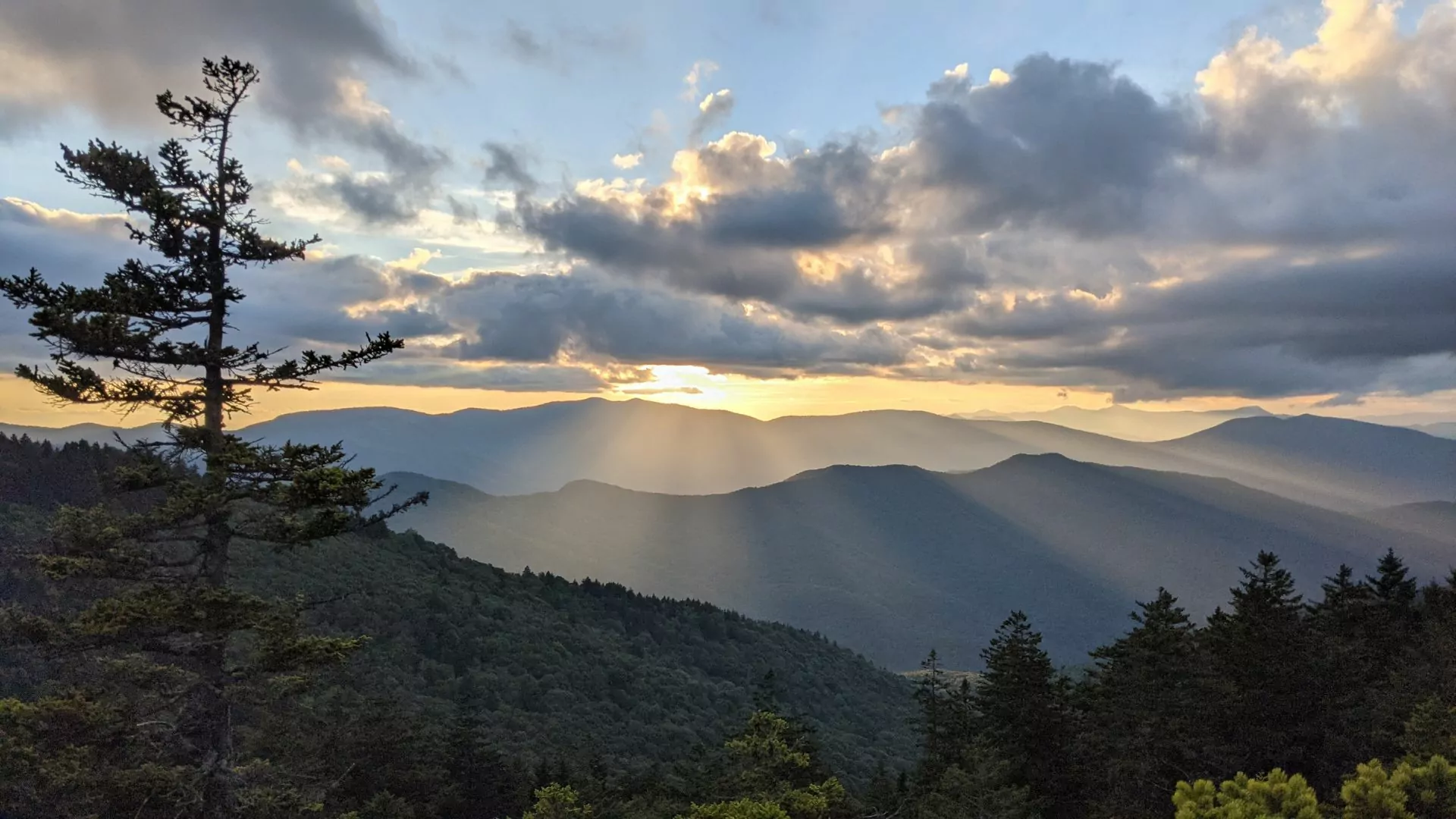 If you’re unwilling to suffer the extremes of winter hiking, spring, summer, and fall offer excellent opportunities for enjoying the Shining Rock Wilderness. Since many of the peaks are over 6,000 feet in elevation, you may want to wait for unseasonably warm spring days or wait for early summer to enjoy the best weather. It is also a great place to cool off from the occasional heat waves of July and August.
If you’re unwilling to suffer the extremes of winter hiking, spring, summer, and fall offer excellent opportunities for enjoying the Shining Rock Wilderness. Since many of the peaks are over 6,000 feet in elevation, you may want to wait for unseasonably warm spring days or wait for early summer to enjoy the best weather. It is also a great place to cool off from the occasional heat waves of July and August.
The most popular hike, offering excellent views and varied forests, starts from the Art Loeb Trailhead off Black Balsam Road, accessible only spring through fall, but allows an 8-mile loop hike on the Art Loeb and Ivestor Gap trail to the edge of wilderness. Another 4 miles away is Shining Rock Mountain making for a moderately strenuous 16 miles hike. The Ivestor Gap Trail is almost entirely flat all the way to Shining Rock Gap, so out and back 16 miles can be quite easy. Weekends over the summer and into the changing of colors in the fall can see large crowds and limited parking on Black Balsam Road, but most people don’t venture all the way into the Wilderness and peace and quiet can be found almost any day.
Hiking
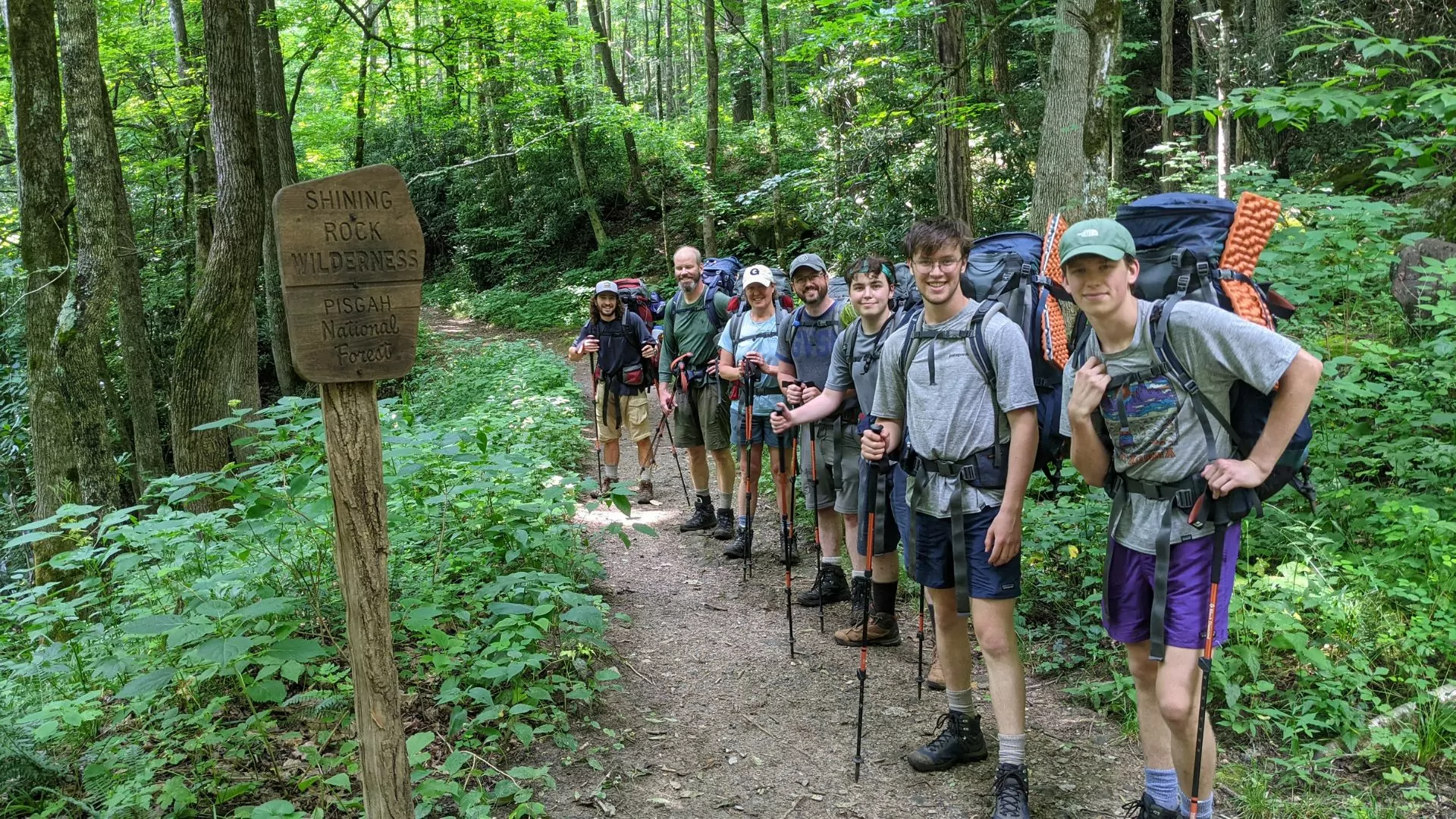 If you’re looking for challenging elevation gain, the Old Butt Knob Trail is one of the steepest in North Carolina and guaranteed to lack crowds. Three miles and approximately 3,000 feet of elevation gain give you access to Shining Rock Peak, and a gentler descent along Shining Creek Trail brings you back to the Trailhead where you parked. If you prefer a longer day out in the Shining Rock Wilderness, The Big East Fork Trail offers chances for swimming and seclusion, and the Greasy Cove Creek Trail climbs to the Art Loeb trail up to Ivestor Gap for a 17-mile loop with the Shining Creek Trail. Both trailheads are about 100 yards apart along highway 276.
If you’re looking for challenging elevation gain, the Old Butt Knob Trail is one of the steepest in North Carolina and guaranteed to lack crowds. Three miles and approximately 3,000 feet of elevation gain give you access to Shining Rock Peak, and a gentler descent along Shining Creek Trail brings you back to the Trailhead where you parked. If you prefer a longer day out in the Shining Rock Wilderness, The Big East Fork Trail offers chances for swimming and seclusion, and the Greasy Cove Creek Trail climbs to the Art Loeb trail up to Ivestor Gap for a 17-mile loop with the Shining Creek Trail. Both trailheads are about 100 yards apart along highway 276.
Another classic day hike is the summit of Cold Mountain from the Daniel Boone Boy Scout Camp at 11 miles round trip and almost 3,000 feet of gain. All of these hikes offer an appreciation for the biodiversity of southern Appalachian forests, from cove hardwoods at lower elevations to spruce and fir groves up high. Gnarled oaks and maples and stands of beech and birch add to the variety, and remnants of American Chestnut can still be found along the technical terrain of the Art Loeb through a section of the Shining Rock Ledge known as the narrows.
Flora and Fauna
Apart from the classic hikes, creeks, waterfalls, and beautiful views, there are other secrets to be found in the Shining Rock Wilderness. Hiding at elevation are unique plants like the Round-Leaved Sundew, a carnivorous plant that secretes sugar from its leaves and attracts insects to supplement its diet.
In the late fall, clustered on rocky terrain you can also find little pockets of American Cranberries, if you have not gotten your berry fix from the plentiful blueberry and blackberry bushes found along the Art Loeb. Its seclusion and elevation also makes it a great area for birding, with a large diversity of songbirds present. Many evenings camping here are also accompanied by Great Horned, Barred, and Saw-whet Owl. The occasional pack of coyotes can be heard yipping in the valleys below, rounding out the ambiance of wilderness.
In the peak of summer, the hillsides go ablaze with Flame Azaleas and varieties of Tiger Lillies and fall is imminent when the Mountain Ash trees burst with their iconic red berries as the greens of summer begin to transition to the reds, browns, oranges, and yellows of fall, while the late blooming asters and Goldenrod add a splash of color to the scene.
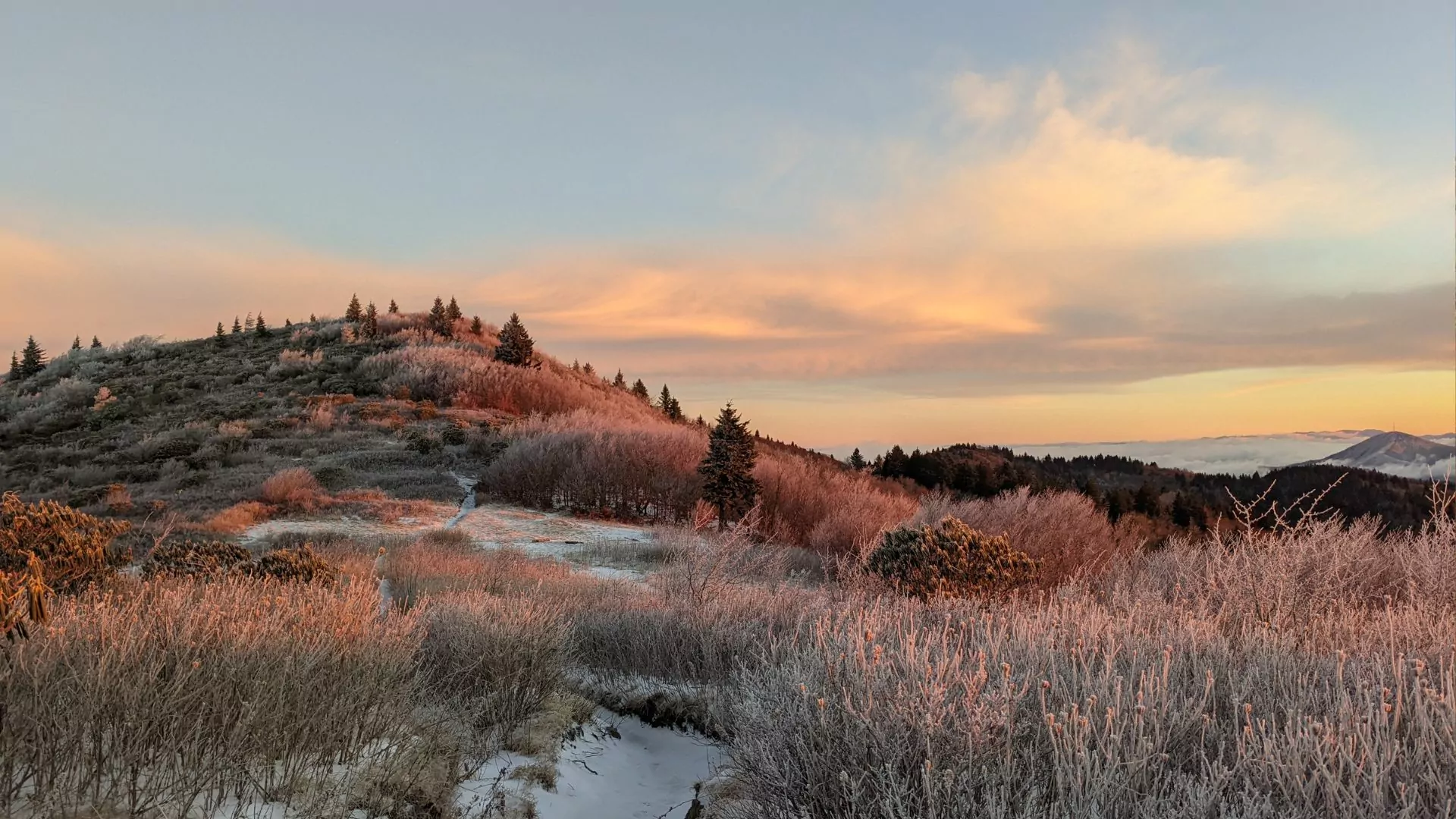 Biodiversity, stunning views of the unbroken quilt of Appalachian ranges, unique mountains, sunsets, sunrises, flowers, birds, mammals, and a variety of recreation in proximity to the largest population of western North Carolina make Shining Rock Wilderness a must visit. Regardless of whether you come and spend a day or a week here, the experience is always magical. I have been blessed with the time to experience these mountains in all their glory, in every season, in all types of weather, and enjoyed the glimpses of wonder that we all hope to see when we visit.
Biodiversity, stunning views of the unbroken quilt of Appalachian ranges, unique mountains, sunsets, sunrises, flowers, birds, mammals, and a variety of recreation in proximity to the largest population of western North Carolina make Shining Rock Wilderness a must visit. Regardless of whether you come and spend a day or a week here, the experience is always magical. I have been blessed with the time to experience these mountains in all their glory, in every season, in all types of weather, and enjoyed the glimpses of wonder that we all hope to see when we visit.
It is all this time here that has reinforced my love and gratitude for this place, this region and all it has to offer. And so, reflecting on all that these mountains have provided me and the gift of their conservation, as the sun climbs higher in the sky and I finally feel the warmth of the day approaching and cutting through the cold of dawn. I pack my things and retrace my steps back to my car, already planning my next adventure into these wild places



